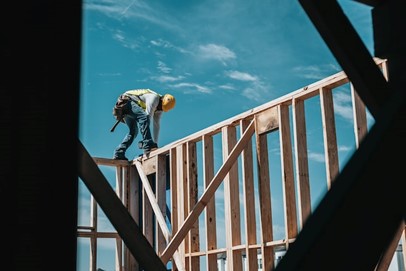David Shulick is an entrepreneur and commercial real estate developer. In the following article, David Shulick discusses the processes of commercial development, among the potential risks, and plentiful rewards.
Investors often turn to real estate development projects for profitable money moves. But those less well-versed in the arena are yet to uncover the genuine risks that come with these investments. As such, seasoned investors emphasize the ups and downs that can occur throughout a project’s life cycle.
David Shulick explains that commercial real estate development, like any similar project, is an often convoluted multi-step process, requiring years before it’s completed. However, there are certainly incredible profits to be had. After all, projects like these bring all-new opportunities to an area, satisfying market demand.
Assuming correct execution, CRE developments can bring investors raging success stories. But it’s imperative for investors to understand a project’s life cycle so they can confidently and accurately assess the associated risks before diving in headfirst.
The Various Project Types and Stages Bring Different Risks
Both the stage and type of CRE project play roles in the overall risk level. David Shulick explains that the steepness of the risk curve, as shown in this graph provided by CrowdStreet, is affected by these factors.
Experts state a relatively low-risk project throughout all stages is a “build-to-suit” retail development. In this type, developers receive a long-term credit tenant (e.g., Walgreens, Costco, etc.) and construct a property to suit the company’s needs.
The risk is low because the buildings are uniform, and it doesn’t come with any leasing risks as the tenant is already in place. That said, David Shulick reports that there could be a slight risk involved with pre-development regarding regulatory hurdles.
On the other hand, a development type that’s quite high-risk is a “spec” or “speculative” project. In this case, developers haven’t received leasing commitments before construction begins. Instead, they justify the development by assimilating it with existing establishments or the forecasted demand.
The leasing risk is high with speculative projects as there aren’t confirmed tenants beforehand. Plus, the construction risk can be high if it’s a unique design. Likewise, pre-development risks run rampant as financing could be challenging to acquire or regulatory obstacles present themselves.
But With Every Step, The Risks Abate
Newbie investors may initially be put off by the seemingly never-ending list of risks in CRE developments. But David Shulick, as well as other investment experts encourage them to go forth and conquer (after evaluating the numbers, of course).
As every project step is completed, the overall risk steadily abates. Naturally, the early stages are the most risk-filled, so by the time construction begins, most of the potential hurdles have been addressed and solved.
CRE Development Projects’ Life Cycles
While all commercial real estate developments are unique, David Shulick says that they share some common ground at every stage — all useful to understand so investors can reap the most rewards while reducing as many risks as possible.

Early Stage — Pre-Development
Initially, David Shulick explains that CRE projects focus on researching and permitting. Those in the field report its duration can be terribly long, meaning investors who enter at this point are shouldering extra risks.
Due to all the unknowns, every pre-development process includes the following:
- Permitting
- Market analysis and feasibility research
- Environmental assessments
- Land acquisition
- Infrastructure improvements
- Site, building, and development plans
- Construction financing arrangements
Since it’s the riskiest step, David Shulick explains that pre-development is usually funded by the project’s sponsor. Although, investors can gain higher returns if they decide to hop aboard at this early stage.
Middle Stage — Construction
The risks at this point are reduced greatly. Some common activities involve:
- Vertical construction
- Marketing
- Utilizing construction financing
- Pre-leasing
- Arranging permanent financing and property management
Outside investors, the sponsor, and short-term construction loans often finance this stage. The debt is given to the developer in increments as construction milestones are achieved.
Investing during the middle stage provides lower returns than pre-development entrances. However, profits run higher than those who invest once the building is complete.
Final Stage — Operation
Lastly, David Shulick says that the building is completely erected, marking its first stage of life. The early- and middle-stage risks are eradicated by now. However, obtaining tenants might still be a risk factor.
All CRE projects tend to share these final stage factors:
- Marketing and leasing
- Finding buyer
- Determining hold strategy
- Stabilization
- Property management
Until stabilization has been achieved, it’s usually funded by construction and bridge financing. Then, permanent or long-term financing comes into play once stabilized. This is the stage with the least risk but, fittingly, yields lower returns.









